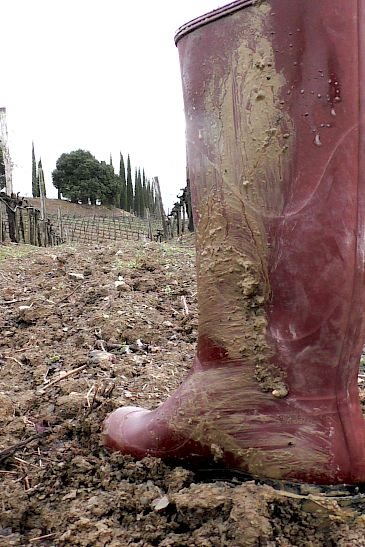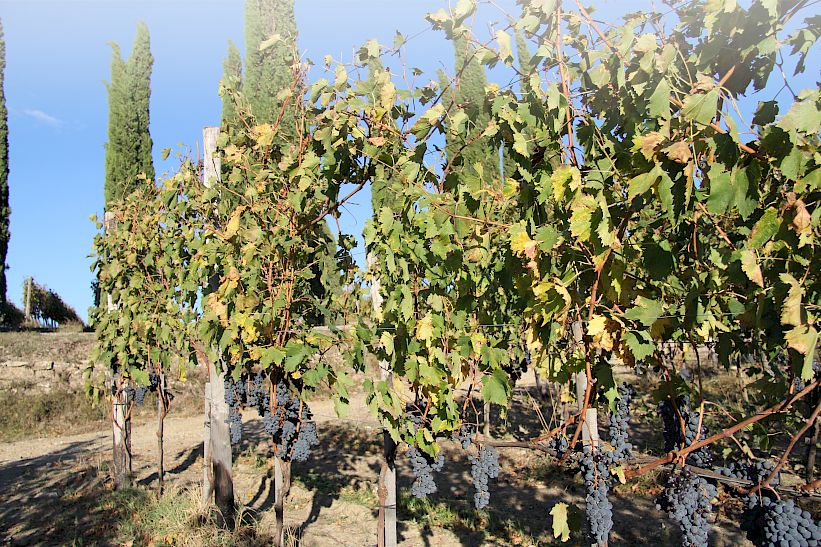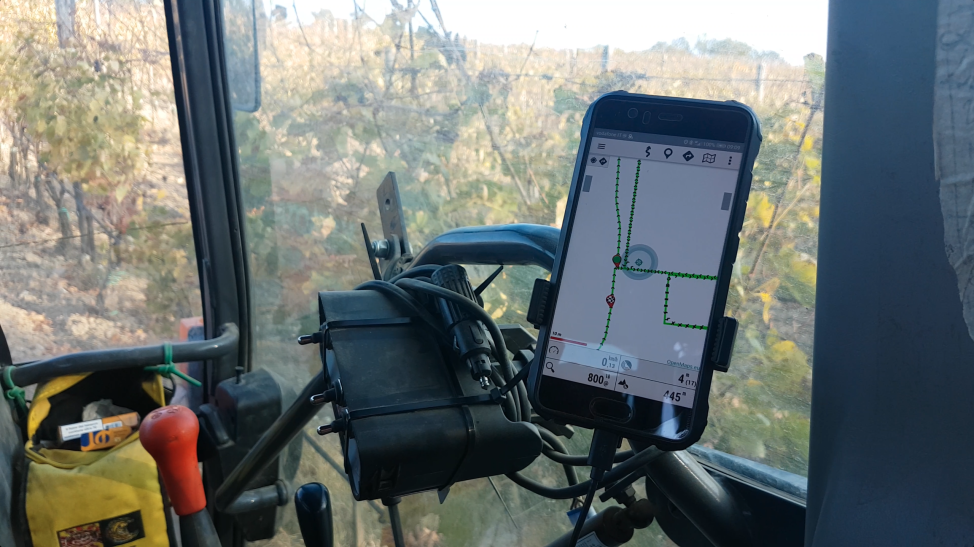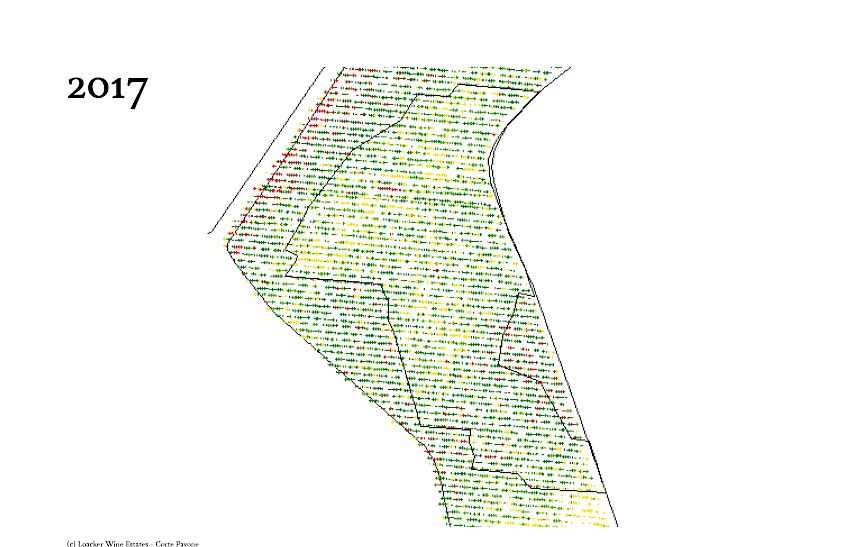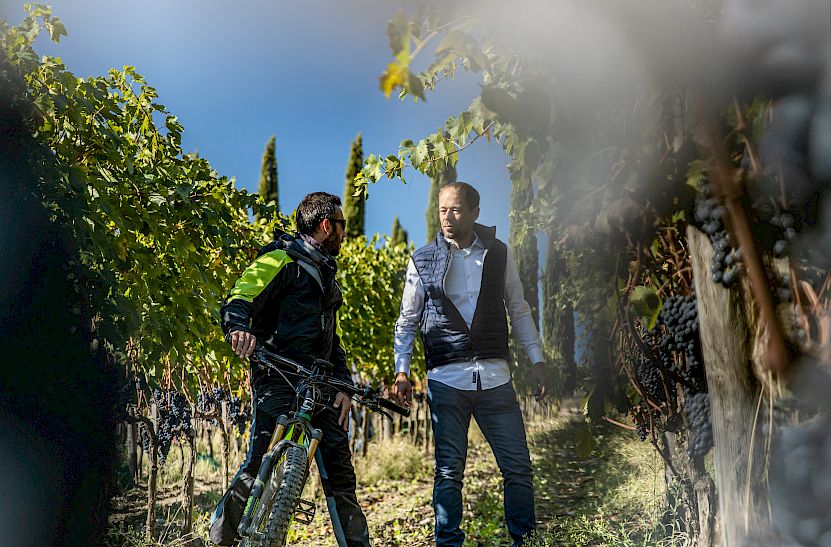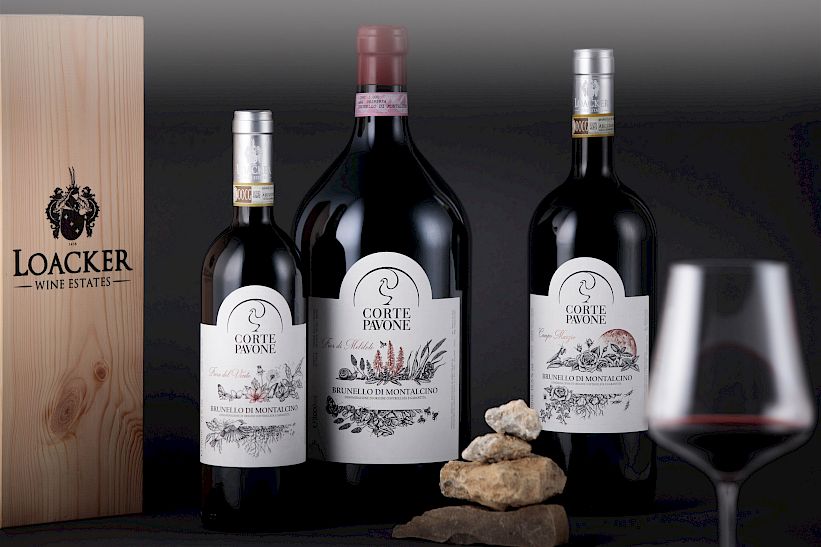The "tropical year" with constant climatic surprises
The 2018 vintage was full of climatic surprises in Montalcino - from an agronomic point of view a challenging and exhausting vintage.
But as you know us, we like to take on challenges - so for us, that meant relying even more on our unique infrared technology for the vineyard selections this year.
Most people who think of summer 2018 think of enormously hot days and tropical nights. In Montalcino, however, the vintage represents an unusually cool summer.
The start of vegetation was fairly steady, then it was characterized by very variable temperatures and heavy rainfall. From May to July, we had 340mm of rain, almost more than half the annual average, which normally falls more in winter.
In addition, there was an alarming hailstorm in mid-June. We were already struggling with serious peronospora infections (downy mildew), and now even more because of damaged berries and stems.
So we had to ask ourselves: "How can we help our vines get back into balance?"
A glimpse behind the scenes
Matteo Gentili, agronomist at Corte Pavone, on August 22, 2018:
"Zones 3 and 4 >>see vegetation map below<<, which are the zones that grow the strongest, still show some non-ligneous shoots. The plants continue to grow as if it were June - the young shoots are struggeling with diseases. That means we need to cut them back.
As for the berries destroyed by hail? We were lucky - I didn't see a single berry leaking pulp. They either closed their wounds as they grew or dried out. Acid rot is barely visible. A great regeneration of the vine.
However, we must remain vigilant: in the last few weeks, we could observe bunches bursting in the tightest places and a few bunches, where the berries ripen differently (Millerandage)."
What did this mean for us in the vineyard?
We have constantly monitored our vineyards in every smallest detail, allowing us to intervene at the right time and support our vines.
Our micro-parceling, i.e. the division into different growth zones by infrared measurements, has allowed us ideal harvest management to bring healthy grapes with good phenolic and technological ripeness to the cellar. And during the harvest, the weather god was also on our side and it was steady until mid-September.
Precision viticulture in pictures
To understand how we use our vegetation maps that result from the measurements, below you can find two different maps: one from vintage 2017 and one from vintage 2018 - both from the same vineyard, the Cru vineyard "Fiore del Vento".
The difference is significant: In the 2017 map, you can see many light-colored areas (yellow and light green), which means the vines have a lower growth strength. That means they don't have that much leaf mass and less chlorophyll in the leaf. In 2018, you can see more dark-colored areas (dark green and red), that is, because the vines have stronger growth, due to more rainfall during the growing season - so in the strong vegetation period of the vine.
Our dynamic or rather vintage matching selection during the harvest is then clearly reflected in the harvest quantities: in 2017 almost 3,000kg of grapes were harvested for our Fiore del Vento, and in 2018 only 2,300kg - over 20% less.
Hayo's resume
Also this year our Brunelli were tasted and rated by Monica Larner at Robert Parker. In an article she quotes Hayo Loacker's résumé: “2018 is a vintage with lots of question marks. The growing cycle saw moments of rain alternated with moments of heat, and ripening was not always easy to achieve. Fermentations were fast and easy, with wines that tended toward reduction. In our view, it was important to bottle later, and that’s what we did.”
The Robert Parker Points: Brunello - 94p., Campo Marzio - 95p., Fiore del Vento - 94p.
Vintage 2018 in the glass
What impact the wine growing year had on the wine can be said quite clearly: the intensive time, many nerves, and thoughts we invested have more than paid off. Today we are happy about the freshness in the wine and the lower alcohol levels. All Brunelli are crisp and ideal to combine with rich dishes - such as a slightly spicy spaghetti carbonara.
taste the Brunelli 2018 at home
What the future holds:
As we all know, the climate has been changing steadily and, above all, rapidly in recent years. But one thing can be observed as a trend - it is getting warmer and drier. 2018 was, until 2022, the last vintage in which we did not suffer from great heat and long periods of drought.
Thank you!


